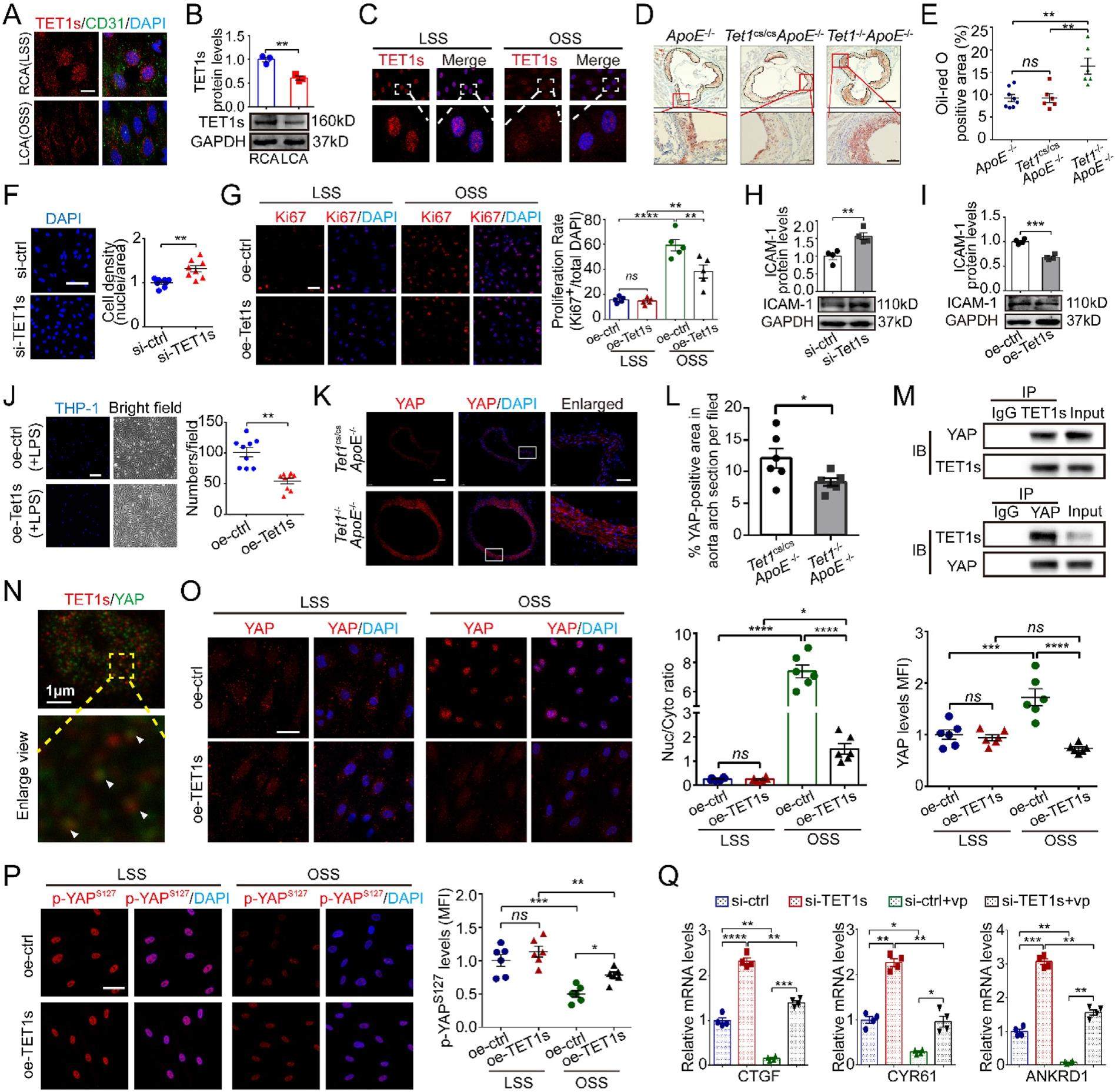
Mechano-sensitive TET1s inhibits endothelial athero-susceptible phenotype through regulating YAP phosphorylation


Atherosclerosis is a chronic progressive disease and one of the major causes of cardio-cerebral vascular diseases. Accumulating evidence indicates that endothelial dysfunction is the initiating step in atherosclerosis. The pattern of local blood flow becomes disturbed (low and oscillatory shear stress[OSS]) in the curved or branched segments of the arterial tree, causing endothelial cells (ECs) to exhibit athero-susceptible phenotypes, such as hyperproliferation and inflammation. By contrast, laminar blood flow in the straight parts of the arterial tree (high and unidirectional laminar shear stress[LSS]) causes ECs to act in a way that protects against atherosclerosis. The short isoform of Tet methylcytosine dioxygenase 1 (TET1s) is implicated in early embryonic development, cancer, and the mammalian nervous system. However, whether TET1s expression in ECs can regulate the initiation and development of atherosclerosis has not been explored. In the present study, we provided in vivo and in vitro evidence that atherogenic OSS reduced TET1s expression in ECs. The reduction in TET1s expression in turn induced the inflammatory and proliferative responses of ECs and ultimately led to atherosclerotic lesion formation. In addition, we demonstrated that TET1s prevented the OSS-mediated nuclear translocation of yes-associated protein (YAP) by increasing its phosphorylation at serine 127.These findings support the protective role of TET1s in modulating endothelial athero-susceptible phenotypes and atherogenesis.
